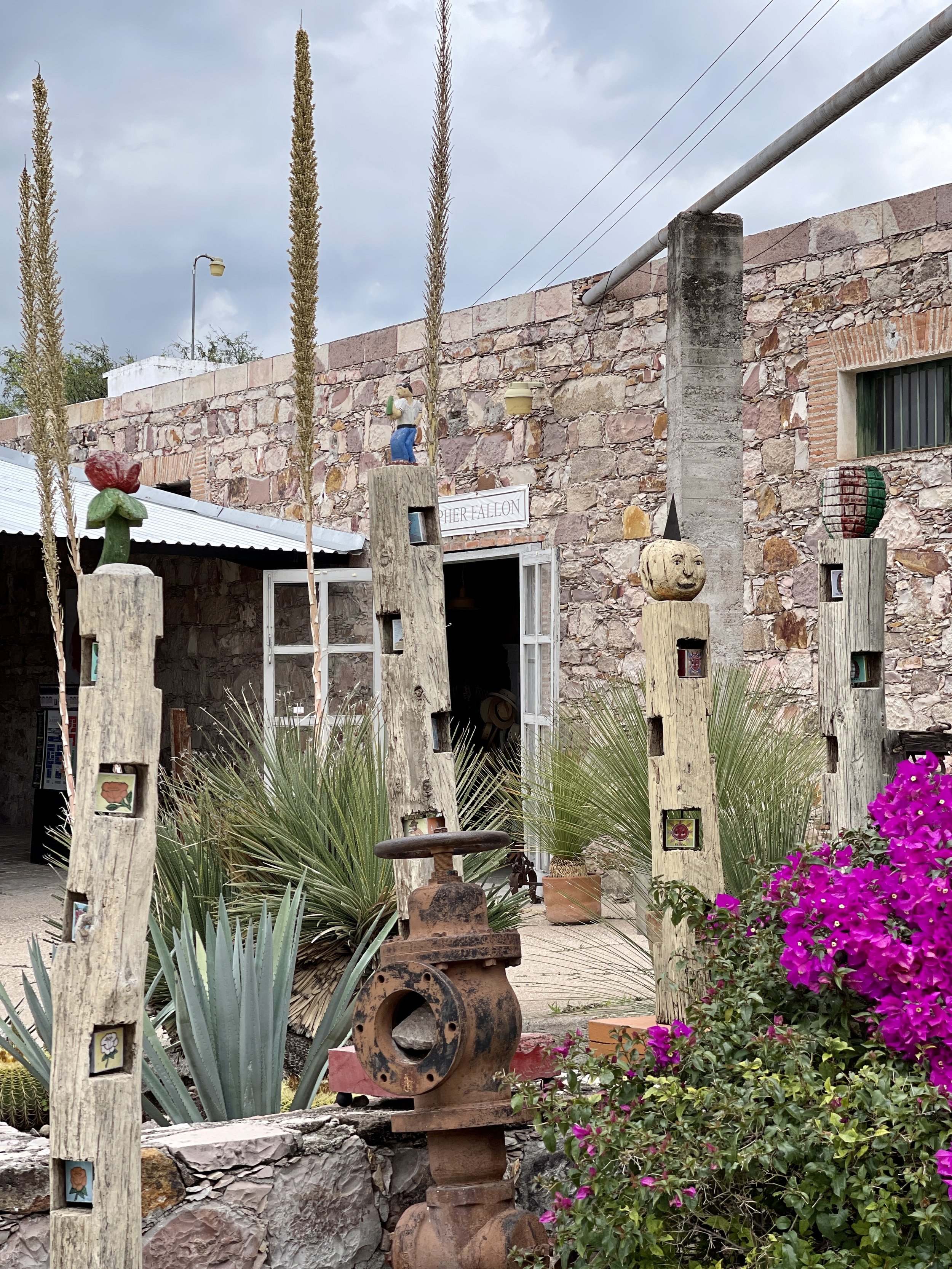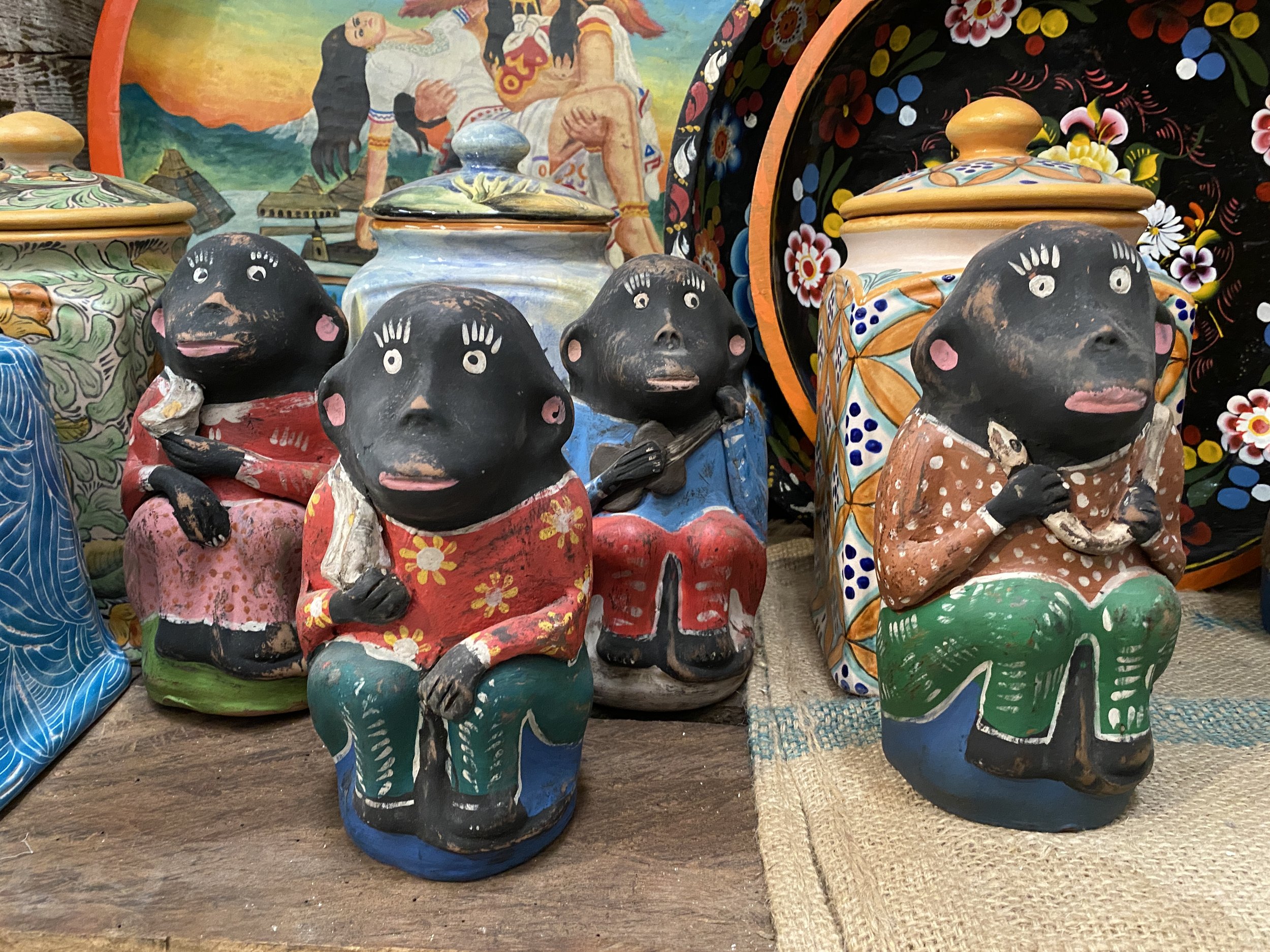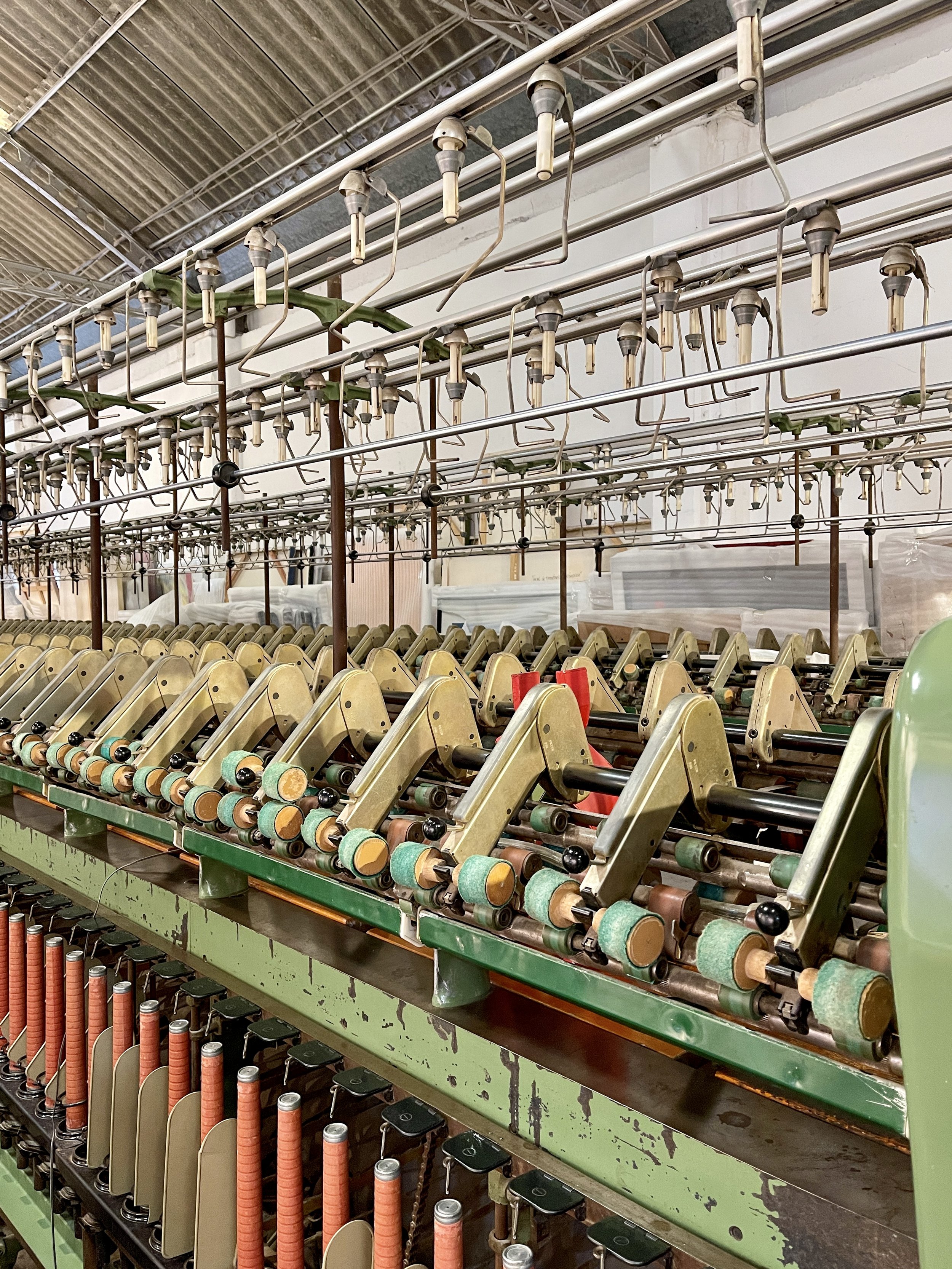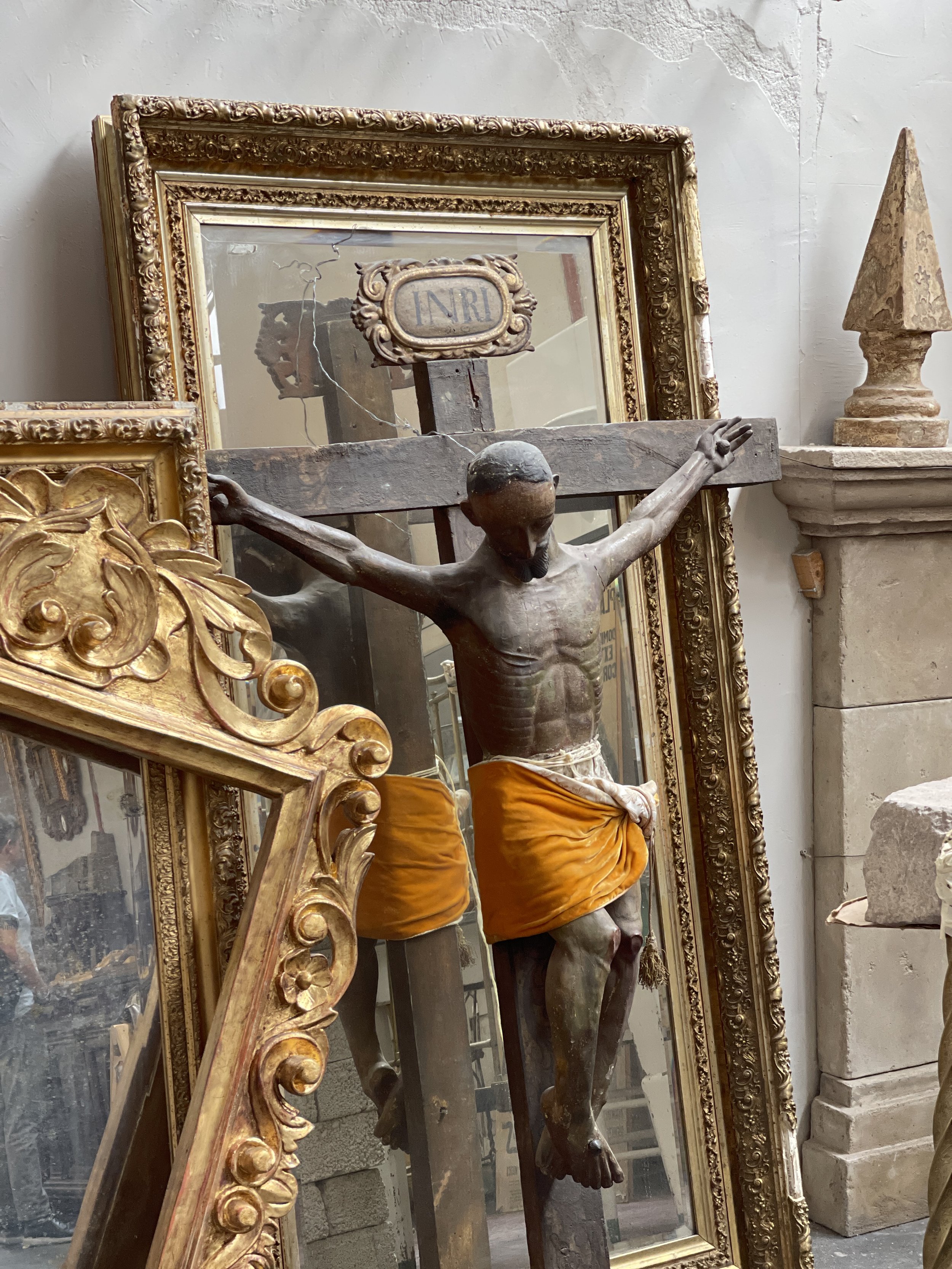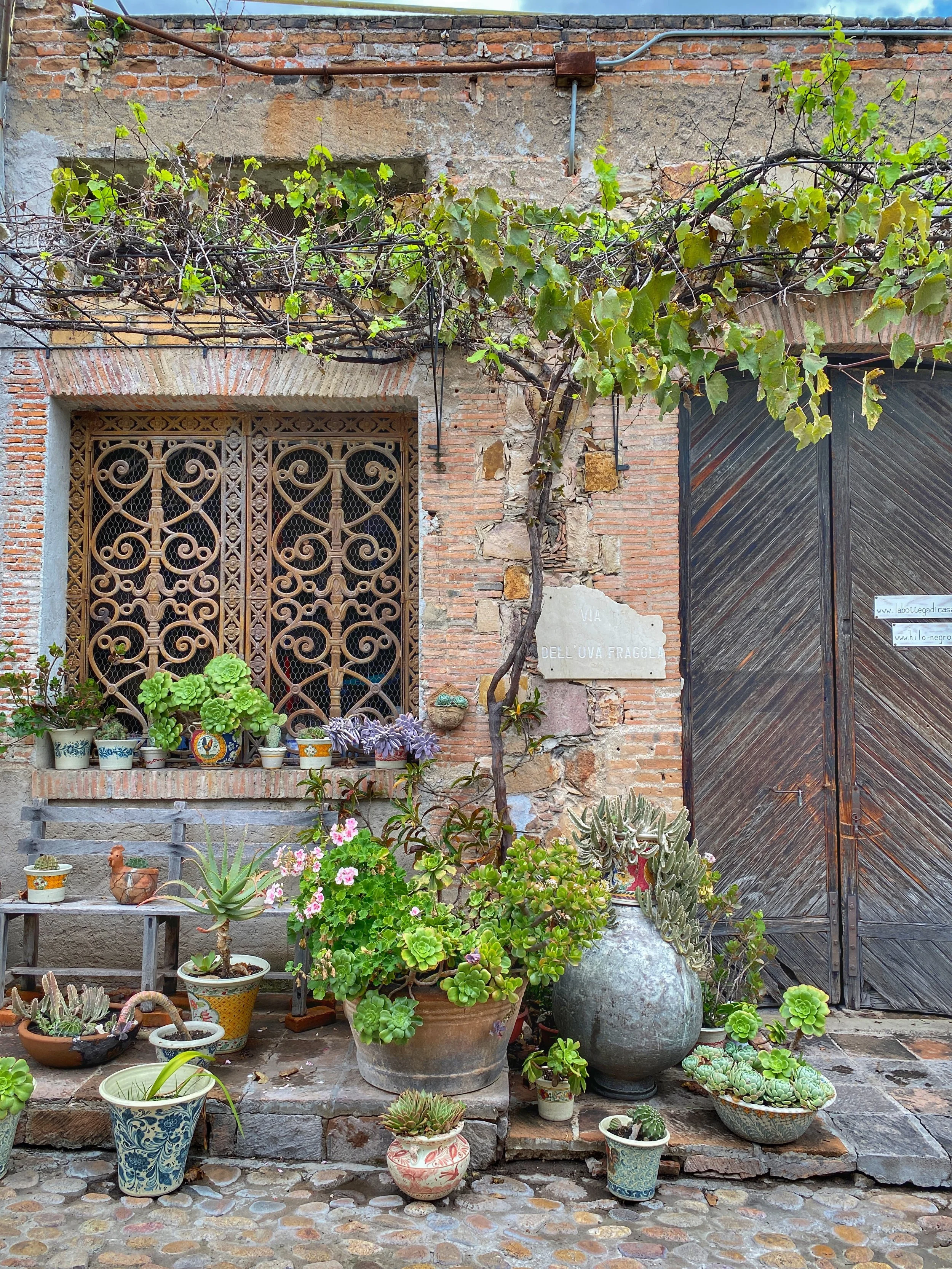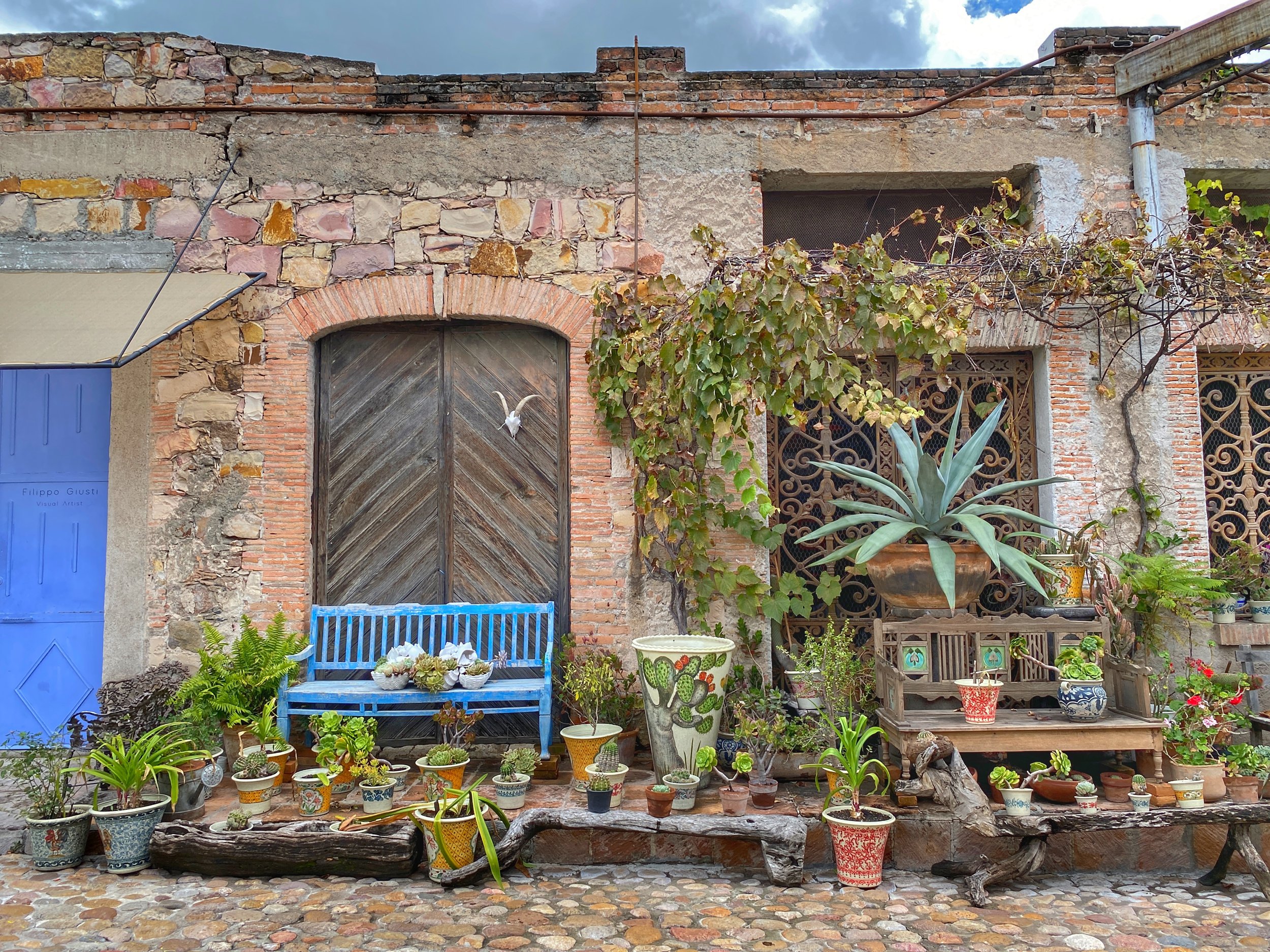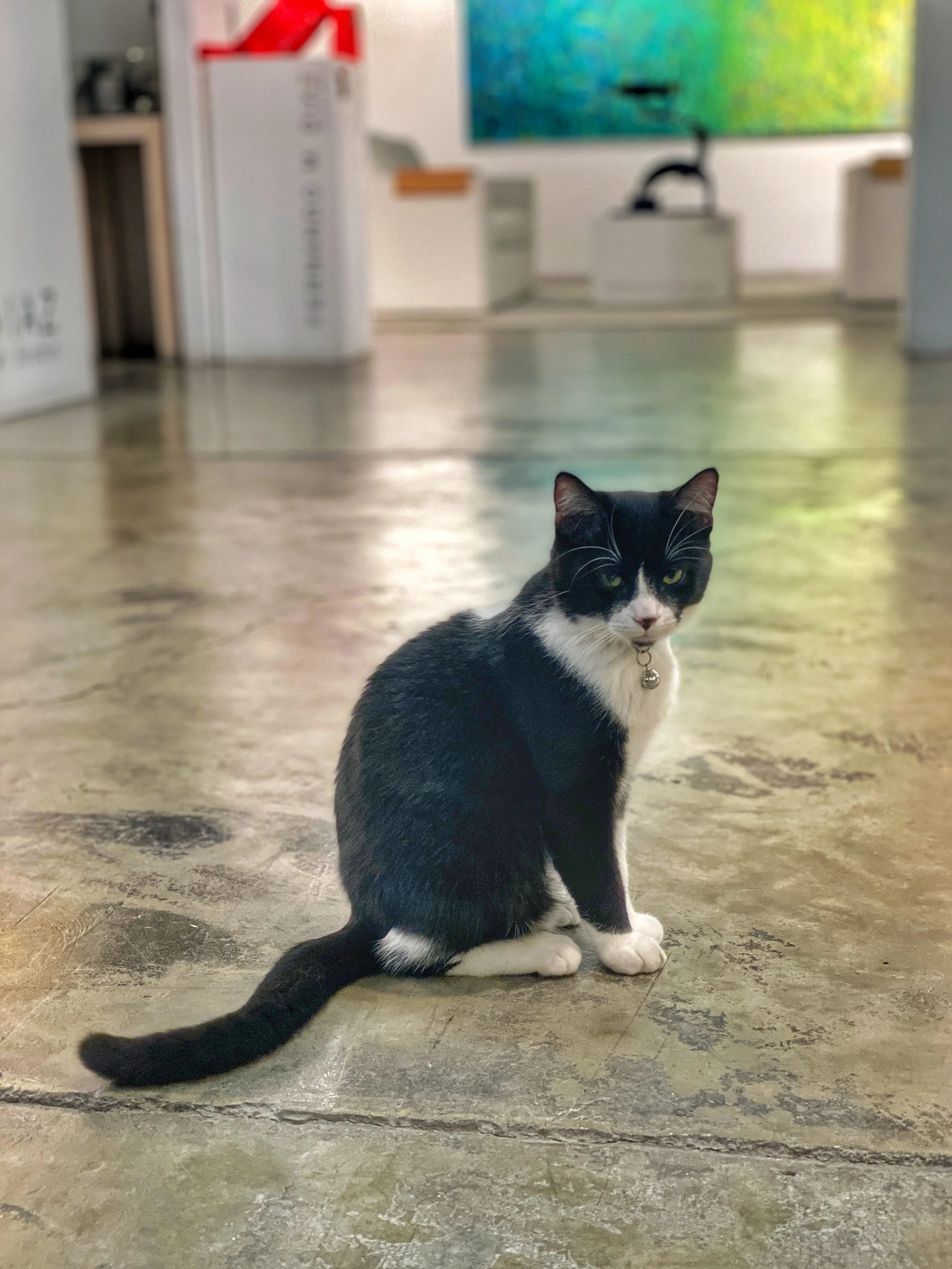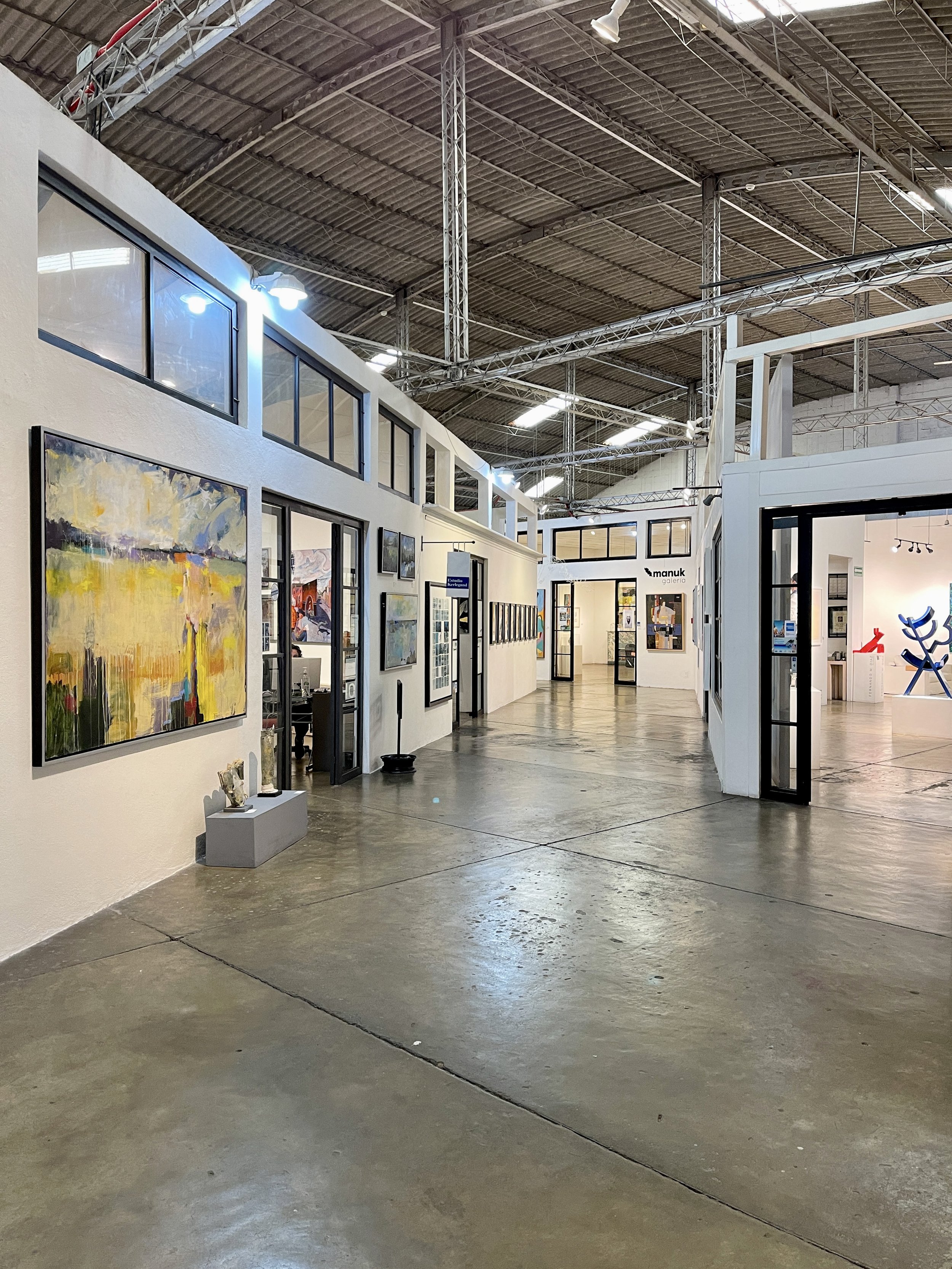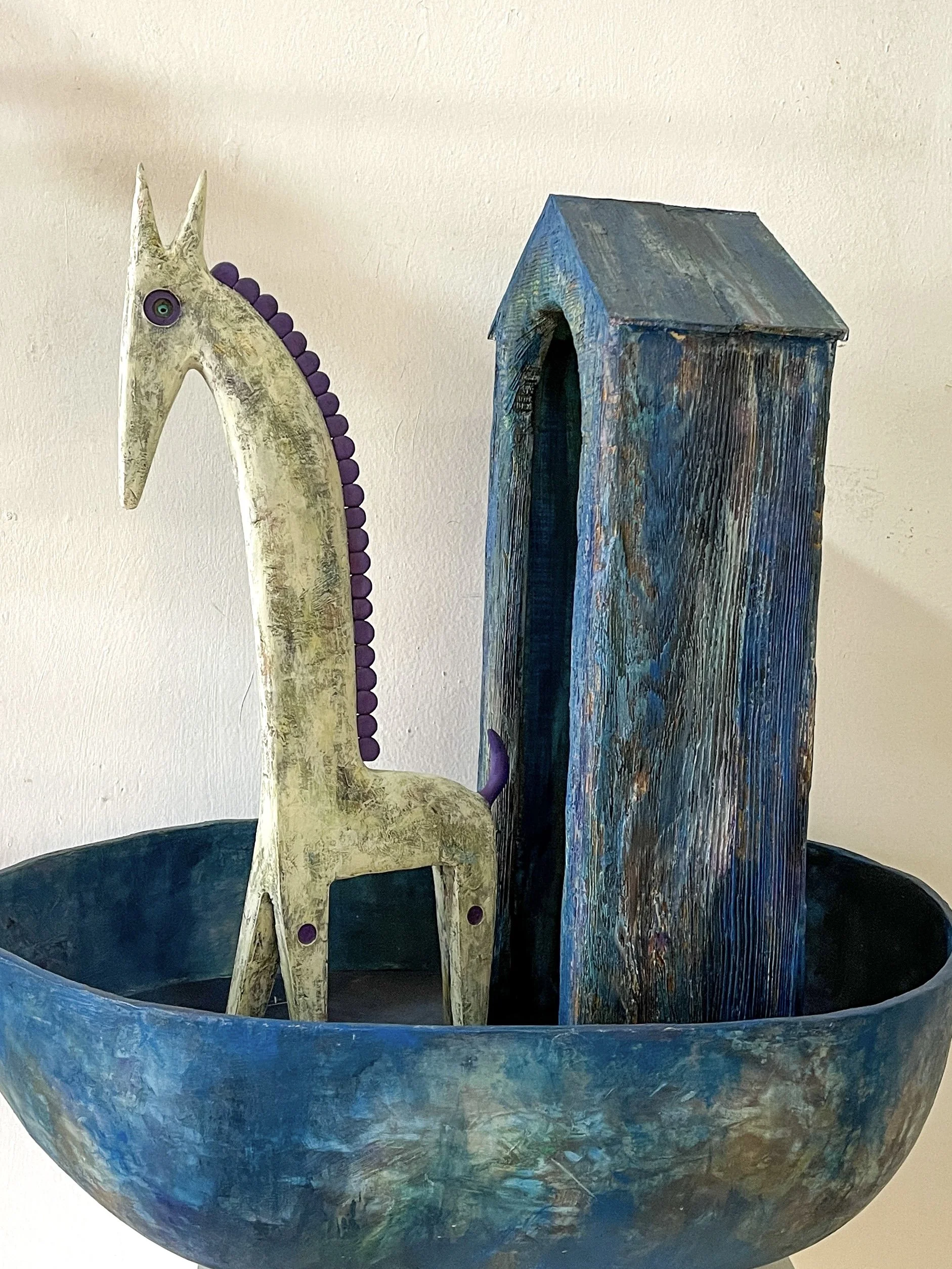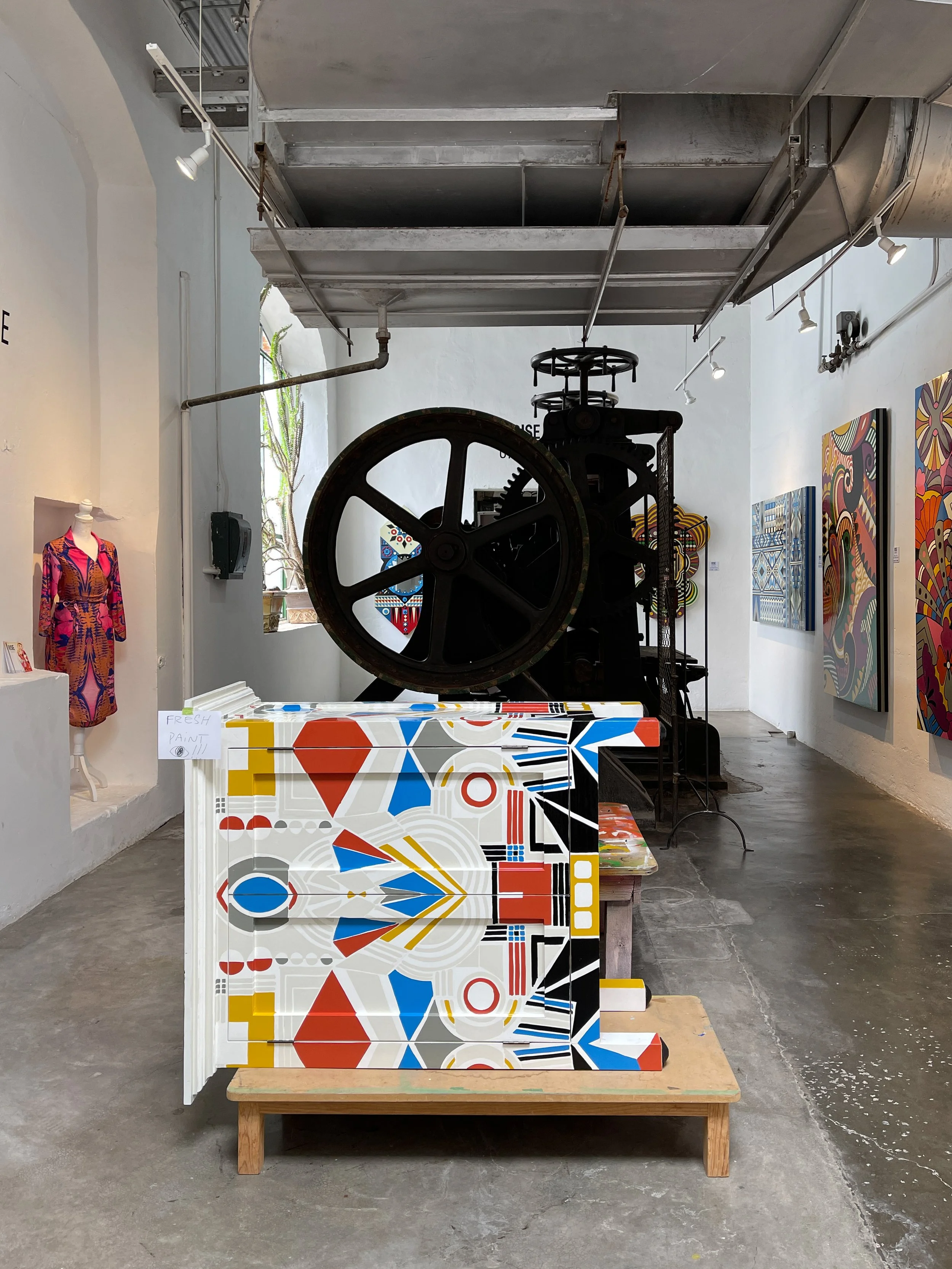A popular stop in San Miguel de Allende, the Fábrica la Aurora spins a new yarn as a complex filled with antique shops, galleries, artist studios and restaurants.
La Fábrica la Aurora, an old textile factory, is a winding complex filled with art of all sorts.
San Miguel de Allende is a town with art in its DNA. There are galleries galore and shops full of colorful folk art. But we knew that one of the places we had to add to our itinerary was the Fábrica la Aurora. It just sounded so interesting: It’s a former textile mill that has been converted into a vibrant arts center. A remnant of Mexico’s industrial era, the factory was built at the turn of the 20th century and featured the best technology of the time. The complex operated for nearly 90 years producing percale (a fabric often used for bedsheets), muslin and flannel, before closing for good in 1991 — that is, until it was reimagined as an arts center in 2004.
We took one look at the mask wall at the front of Casa Michoacana and knew we had to go in.
Walk This Way: Shopping Stops on the Way to Fábrica la Aurora
Whenever we can, we walk on foot in the cities we stay, and I’m especially glad we did so in SMA — otherwise we might have missed Casa Michoacana, an incredible shop filled with folk art that we passed on the way to the Fábrica. Many of the items here are made by artists from the state of Michoacán but also include a few from other regions of the country, too. You will find a collection of ceramic piñas of all sizes, multi-tiered candelabras, innumerable masks, wood carvings and more. The staff was patient and informative, and it was here that we found a variety of changos, black clay vessels used for storing mezcal in the shape of a monkey, and purchased one.
The owners also run the sister shop with the same name, a bit farther down, on the opposite side of the street. Look for the sign with two hands and an archway decorated with handpainted flowers.
“The renovation retains the building’s industrial character, with open spaces, concrete floors, high ceilings, steel casement windows, exposed pipes and more than a few industrial artifacts, including massive mechanical looms.”
We wanted to get this alebrije — but there’s only so much space in our home.
We did, though, find room to bring back a chango mezcalero!
As we walked along Calzada de la Aurora and crossed a puente (bridge), we paused to admire a carved Colonial-era Cantera stone cross. The crucifix features an INRI plaque at the top and so-called Arma Christi (Weapons of Christ), including glyphs of Christ’s face, a nail and a ladder — items linked with Christ’s crucifixion.
If you walk to La Aurora, you’ll cross a bridge with this cross. It depicts the Arma Christi, the collection of artifacts related to the Passion of Christ.
Here’s your sign (literally) that you’ve arrived at La Fábrica la Aurora.
Art Park in front of La Fábrica la Aurora
Just a few minutes later, we passed an oxidized Cubist sculpture of four converging figures and a sign marking the entrance to Fábrica la Aurora. The park-like grounds contain additional sculptures, including Oso Grizzly by Francisco Esnayra, a striking work of art composed of a series of metal bands in the shape of a bear. It majestically stands in place on a patch of mulch amongst the trees, while the sculpture Looking for Balance by Rodrigo de la Sierra features a trio of his childlike Timoteo characters precariously balancing on an unsupported ladder.
Oso Grizzly by Francisco Esnayra
Looking for Balance by Rodrigo de la Sierra
La Aurora’s historic façade includes its central archway with metal lettering and wrought iron gate.
The Dawn of a New Fold as an Art Makers Outpost
Most of the original structure of La Fábrica remains intact. Its brick façade is punctuated by Cantera stone arches, made from quarried volcanic rock. Its central entrance has a wrought iron gate and metal lettering spelling out “La Aurora” above. The arts and design center was founded by a quintet of creative forces: Francisco Garay, Christopher Fallon, Mary Rapp, Merry Calderoni and DeWayne Youts. In addition to showcasing local and expat artists’ works, there are also places to eat. A burger joint named El Grandpa & Son occupies one side of the front and can be seen through the aforementioned arches. There’s also a café called Geek & Coffee tucked away somewhere. We didn’t happen to stumble upon it during our visit — the complex is quite large and meandering.
The front courtyard before you enter the sizable complex filled with galleries and studios.
The renovation retains the building’s industrial character, with open spaces, concrete floors, high ceilings, steel casement windows, exposed pipes and more than a few industrial artifacts, including massive mechanical looms that were used for the production of cloth from cotton.
An industrial Zinser loom tucked among one of the galleries at La Fábrica la Aurora
Wandering the Maze of Fábrica la Aurora
The first shop we stopped into was Cantadora Antigüedades, which specializes in arte popular and ephemera from the 16th to 19th centuries. A figure depicting Jesus riding a donkey, possibly used during Easter week processions, stands outside the store entrance.
By this time, Wally and I were both craving a snack, and the relaxed and casual open-air Café de la Aurora was the perfect spot. I tried a mango smoothie that incorporated a large dose of ruby red chamoy sauce, which was refreshing. If I had to describe the flavor, I would say that it was simultaneously sweet, spicy and tangy — the chile on the glass rim was a nice touch. What’s chamoy, you ask? The popular condiment is a combination of dried chiles, mangoes, apricots or plums and lime juice that’s added to flavor hard candy as well as drizzled on fruit.
Just beyond the café, were the cutest vistas of potted plants arranged along the old factory wall.
Lotería imagery decorates this wall at La Fábrica la Aurora.
Can you see why Wally was obsessed with these vignettes?
One shop in the Fábrica, La Buhardilla, purchased a trove of items in 2004, including letters, sketches, paintings and clothing from an eccentric lawyer in Mexico City that were alleged to have once belonged to the surrealist Mexican artist Frida Kahlo.
These artifacts are well-documented in the fascinating book Finding Frida Kahlo. The personal effects were said to have been originally acquired from Abraham Jiménez Lopez, a woodcarver who received them in lieu of payment for frames he had made for Kahlo. While many experts question their authenticity and say that the objects are fake, I’d like to believe that at least some of them are real.
This kitty seemed to share our taste in art.
A modern-feeling wing of art galleries toward the back of La Fábrica
After resting and refueling, we ventured into another annex, where we saw a small black and white cat slinking through one of the galleries. We wandered into Manuk Galeria, which was founded by Mexican artist Lourdes Rivera. I suspect we were drawn to this gallery in particular because of its well-curated assortment of contemporary and folk art-inspired pieces.
Artwork on display at Manuk Galeria at the back portion of La Fábrica
While there, the compelling work titled Neblina (Fog), by self-taught artist Erik García Gómez, caught my eye. The painting features a stylized animal (pig? dog?) and spotted albino snakes. According to the artist’s bio, his main source of inspiration comes from the town he grew up in, San Cristóbal de las Casas, and memories of his grandmother, who was a village healer.
Neblina by Erik García Gómez
A menagerie of heads from a sculpture workshop led by Juan Luis Potosí
The whimsical Travesías sin Rumba by Ernesto de la Peña Folch sits atop a pedestal outside CSEIS gallery.
Italian for “the Spice,” Le Spezie lives up to its name — the spice of life, that is. This design shop features a mix of handicrafts from Mexico and other regions of the world. Colorful metal roosters, distressed painted furniture, sofas and accent cushions upholstered in colorful fabrics are all for sale here. Also of note is a range of industrial and hammered copper lighting fixtures. I especially liked the painted wood Kamadhenu, the wish-fulfilling Hindu cow goddess, sitting atop one of the cabinets.
What’s not to love? The Kamadhenu is part woman, part cow, with the wings of an eagle and the tail of a peacock.
The last space Wally and I walked through was Rise, a store featuring the works of Argentine graphic designer Lucas Rise and a clothing line created by his wife and business partner, Giuliana Vastarella. Rendered in jewel-tone hues, his works have been digitally printed onto textiles, with a few resembling kaleidoscopic Rorschach tests. Rise works in a nontraditional manner by using cabinets as his canvas, combining geometric forms, each meticulously painted by hand.
A steampunk-looking apparatus with oversized gears, a remnant of the textile factory, shares a space with Rise.
Over the years, La Fábrica has expanded its galleries and studios as places where both national and international artists can create and sell their work. It’s a short distance from the historic center of San Miguel de Allende, and if you’re like the two of us, you can easily spend a fun afternoon going from one gallery to the next. –Duke
A statue of a rearing horse stands in the parking lot of the arts center.
Fábrica la Aurora
Calzada de la Aurora s/n
San Miguel de Allende
Guanajuato
Mexico

